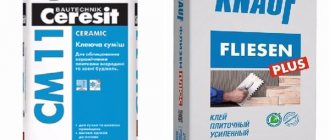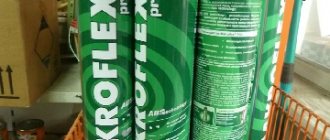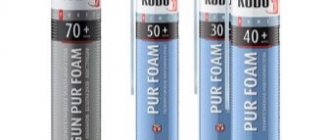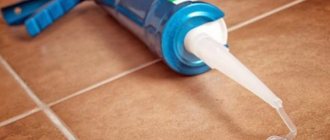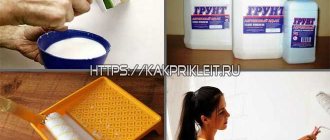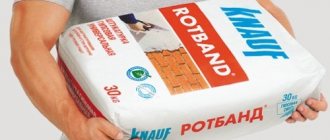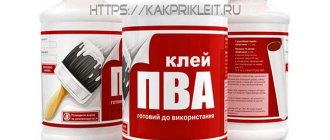To seal joints and joints, performing moisture and heat insulation work, polyurethane foam is widely used in the construction industry. The material easily adheres to different surfaces, has a long service life and high strength. Polyurethane sealant is easy to apply using a construction gun. To complete the finishing treatment of foamed areas, you need to know how long it takes the polyurethane foam to dry. This parameter depends on several factors - the quality of the sealant, conditions of use, type of material.
Characteristics of polyurethane foam - let's look into the details!
This sealant began to be used in the construction industry relatively recently, but in this short time polyurethane foam has almost completely replaced its former competitors. It is easy to apply, inexpensive, lasts for many decades, and has sound and heat insulating properties. Most often it is used to seal gaps between the doorway and the door frame when installing it, as well as when installing windows.
As the sealant expands, it fills all the voids, reliably “glues” the surfaces together, and when the polymer hardens, it secures the door frame or window. The foam is not afraid of precipitation and cold, it does not allow electricity to pass through and is not afraid of mold and mildew. The only drawback is the fear of ultraviolet radiation; however, the material is often applied at the stage of rough work, which is then hidden under a decorative layer of plaster.
Anyone who comes across this material quite often begins to pay attention to parameters such as:
Porosity of polyurethane foam. The smaller the pores, the better - less plaster consumption and stronger material structure. The more closed pores on the surface, the higher quality the material is - it will reliably retain heat inside the house. Volume of polyurethane foam. We are talking about the volume of the polymer after it hardens. It is important to remember that manufacturers indicate the volume based on standard climatic conditions: above-zero temperature, high humidity. In winter, the volume of finished foam from a cylinder of the same company may be half as much, and the company has nothing to do with it - low temperature and low air humidity are to blame. It should also be remembered that the yield of material from a cylinder used with a mounting gun is usually greater than from the option with a ready-made adapter, since manufacturers pump more gas into professional cylinders. It is a fact that household cylinders very often run out of gas before the material does, and this is money wasted. Traditionally, cylinders have a capacity of 300 ml, 500 ml and 750 ml. A 300-ml bottle contains about 30 liters of foam, which is enough to seal a gap of up to 5 cm between one door frame and the doorway. If the gap is larger, it is recommended, in order to save money, to reduce the width of the gap by using a layer of foam or other similar material. The foam yield from a 500 ml container is up to 40 liters, and from a 750 ml container – up to 50 liters. One 750 ml can is enough to treat two standard door frames. Material adhesion. The very concept of “adhesion” means the ability of one material to stick to another. In the case of polyurethane foam, the adhesion of the material is very high to almost any surface, except cellophane, polyethylene and Teflon. Due to its high adhesion rates, this sealant is often used as an adhesive, especially when gluing PVC or foam panels. Rest assured, after the binder has completely hardened, the panels can only be torn off with “meat.” High adhesion allows you to seal even large gaps by applying the polymer in several layers. However, in such cases, do not skimp on the material - low-quality foam clings to the surface worse, falls down, and costs more. In a word, it is cheaper to buy the cylinder that is more expensive. The quality of the cylinder. Both the design and quality of the cylinder can affect the final result. Firstly, high-quality products are equipped with reliable valves that easily return to their original position after pressing, blocking the access of air and the exit of gas. By the way, it is by the cylinders that you can determine what you are dealing with - high-quality material or a cheap fake. In the store, take two cylinders for comparison - if the contents are of different quality, you will feel it. The best container will be heavier, and as you move you will feel the contents slowly rolling from side to side. In a cheap container, the prepolymer will hang around like sour yogurt.
Features of polyurethane material
Polyurethane foam is widely used in construction. Due to the expansion of the material, voids are filled and surfaces are glued together.
Use applies to:
- Installation of window and door structures;
- Sealing of elements of communication systems;
- Insulation of premises;
- Filling hidden voids and defects on various surfaces, etc.
Foam is vulnerable to ultraviolet radiation. Therefore, the material is applied at the roughing stage. Subsequently, the cracks are closed with finishing materials.
In addition to the expansion coefficient, there are other parameters that you pay attention to when choosing a material.
Main characteristics:
- Structure – a high-quality product is characterized by small cells and a large number of closed pores on the surface;
- Final volume - the volume of foam after its drying time has completed. Some sealants with a 0.75 liter container volume can provide up to 60 liters of final volume;
- Adhesiveness is the ability of a sealant to provide good adhesion to the surfaces to which it is applied. The exception is Teflon, cellophane, polyethylene - they do not lend themselves to good gluing with foam;
- Cylinder design - high-quality containers are equipped with a reliable valve; the material must move slowly while the cylinder is moving.
The result of applying different sealants
Description
Polyurethane foam is classified as a sealing agent, which is almost impossible to do without in the construction process. It is used in cases where there is a need to seal seams or joints with a depth and width of more than 3 cm. Before using this material, builders wonder how long it takes for the foam to dry completely, but it turns out that this question has been raised incorrect. First of all, it should be said that the main secret of the complete transformation of the material into strong polyurethane foam lies in the degree of wetting. But we will pay attention to this fact later.
First you need to decide why builders prefer polyurethane foam:
its application is very simple; the pricing policy is affordable; long service life.
In addition, this material has qualities that insulate sound and make it possible not to lose heat from the room.
Most often, foam is used during the installation of balcony blocks, windows or doors of various types. When applied, the composition begins to expand and at the same time fills all the voids, thereby gluing the desired surfaces. It should be noted that the hardening time also depends on the thickness of the layer that was applied. If it is no more than 5 cm, then within 3 hours after leaving the container the foam will reach the required density.
Foam is also so popular for the reason that, when frozen, it is not susceptible to the effects of temperature, moisture and even electricity, in addition, fungus does not appear on it. It should be noted that the foam may undergo changes from the influence of ultraviolet radiation, but this defect can be eliminated if you use decorative plaster.
1
What is the coefficient of expansion of sealant
The main value of polyurethane foam lies in its ability to expand quickly and repeatedly. Household types of sealant are capable of increasing their volume by 60%!o(MISSING)t of the initial state, while professional compositions, which have a significantly better expansion coefficient, can increase by 2-3 times. The ability to increase in size depends not only on the composition and quality of the material, but also on the conditions in which it is used. The coefficient of expansion of the polymer is affected by temperature, ambient humidity, the rate of release of the composition from the container, and even the method of application to the surface to be treated.
We recommend: Why wood rots - possible causes and ways to eliminate them
Polyurethane foam tends to expand greatly
The maximum possible volume of foam output is always indicated on the cylinders, but such results can only be achieved under ideal conditions, so you should not trust manufacturers’ statements 100%!
The entire procedure for expanding the prepolymer is divided into two stages. Primary expansion occurs immediately after the material exits the balloon. Secondary expansion lasts until the final hardening of the composition and its transformation into a polymer. The material acquires the greatest volume at the first stage, however, it is not recommended to ignore secondary expansion; at this stage, the foam can acquire up to 30% of its maximum volume.
Polyurethane foam can not only expand, but also shrink after leaving the container. For good building materials, the shrinkage value rarely exceeds 5%!, (MISSING) that is, strong shrinkage may indicate low quality. Significant shrinkage of the foam often leads to rupture of the polymer mass, which in turn can cause additional problems.
We recommend
Concrete contact consumption per 1 m2 Anaerobic sealant for threaded connections in plumbing Concrete hardening time - what factors does it depend on?
Features of the material
To judge the drying speed of a sealant, you need to understand its features.
:
- After leaving the container, the volume immediately increases initially. The sealant fills the entire space down to the smallest cracks.
- When the polyurethane is already exposed to air, secondary expansion occurs. This feature can have a big disadvantage if the conditions of use are not followed. Polyurethane foam reduces volume in case of extreme heat, dirty base or premature mechanical impact.
- The surface layer of household foam hardens in 20 minutes. You can cut off the excess after 4 hours. A two-component sealant hardens faster. The chemical process is completed within a day.
- A feature of the installation material is increased adhesion. Polyurethane adheres well to glass, wood, concrete, plastic, steel, and stone.
- Cured polyurethane does not react to temperature changes.
- The mounting sealant is afraid of UV rays. When exposed to the sun, it turns orange-brown and breaks down.
Polyurethane foam serves only as a sealing material. The hardened polyurethane on top must be protected with putty, paint, and primer.
How is polyurethane foam used and how long does it take to dry?
It is considered an amazing insulating material that is created specifically for:
filling cracks in rooms without heating, roofing; filling gaps around various pipes, doors and windows; fixing doors and windows without additional fasteners; attaching thermal insulation materials to walls; sound insulation of pipes, air conditioners, hoods, etc.; wide application in repairs premises; filling gaps in boats, rafts, etc.
In order for the material to perform its functions well and serve as long as possible, it is necessary:
seal seams and cracks up to 80 mm wide (large gaps are first filled with boards, bricks); sprinkle the surface with water for better adhesion (before and after application); shake the can before work and hold it upside down; fill the gap not completely (1/2 or 2/3), thereby reducing the consumption of polyurethane foam; cut off excess after polymerization (full hardening time - 24 hours); protect the surface from the sun with any paint; use only high-quality products of a well-known brand.
Use temperature
The recommended temperature of use influences how long the foam will take to dry. For summer
The temperature range is set from +5оСº to +35оСº.
Winter
sealant can be used in frosts from –10°C.
There is foam recommended for use at –18°C. However, the lower the air temperature, the lower the expansion coefficient. All-season
is universal and can be used in winter and summer.
Cured polyurethane is not affected by ambient temperature.
“How long does it take polyurethane foam to dry?” – find out the answer!
In fact, the question “How long does it take for spray foam to dry?” placed completely wrong! The secret to converting prepolymer into strong polyurethane foam is how well it wets. The speed of “drying” of the foam depends on moisture. Let's take a closer look.
Expansion coefficient is the main parameter
The value of this building material largely depends on its ability to expand many times over. Household foam can expand up to 60%!o(MISSING)t of the original volume, professional compositions have a much higher coefficient - up to 300%! (MISSING) Moreover, the same foam under different conditions can expand in completely different ways. The prepolymer is influenced by temperature, air humidity, type of application, and the rate of foam release from the container. And different masters in the same room may have different results. On the packaging, manufacturers indicate the maximum volume of polymer yield, but you should not strictly rely on it.
Expansion of the prepolymer during the process of exiting the balloon and solidification is divided into two types: primary and secondary. The primary expansion is called immediately after leaving the container, the secondary lasts until the polymer conversion process is completed. Secondary expansion of high-quality materials reaches 30%!, (MISSING) which cannot be ignored when using them. Usually it is enough to fill the gap one-third so that it is eventually completely filled with polyurethane foam.
In addition to expansion, polyurethane foam can also shrink, although for high-quality products this shrinkage is rarely 5%! (MISSING) If you observe large shrinkage, alas, you have come across a very low-quality polyurethane. In this case, even a mass rupture may occur, which in turn will entail a lot of other problems. Each master chooses foam according to his needs. For some, large expansion is important, in such cases Makroflex, Penosil GoldGun, Moment, Makrosil are suitable; when installing windows, it is best to use Tytan - it gives optimal expansion and hardens quickly.
Characteristics of polyurethane foam - let's look into the details!
This sealant began to be used in the construction industry relatively recently, but in this short time polyurethane foam has almost completely replaced its former competitors. It is easy to apply, inexpensive, lasts for many decades, and has sound and heat insulating properties. Most often it is used to seal gaps between the doorway and the door frame when installing it, as well as when installing windows.
As the sealant expands, it fills all the voids, reliably “glues” the surfaces together, and when the polymer hardens, it secures the door frame or window. The foam is not afraid of precipitation and cold, it does not allow electricity to pass through and is not afraid of mold and mildew. The only drawback is the fear of ultraviolet radiation; however, the material is often applied at the stage of rough work, which is then hidden under a decorative layer of plaster.
Anyone who comes across this material quite often begins to pay attention to parameters such as:
Porosity of polyurethane foam. The smaller the pores, the better - less plaster consumption and stronger material structure. The more closed pores on the surface, the higher quality the material is - it will reliably retain heat inside the house. Volume of polyurethane foam. We are talking about the volume of the polymer after it hardens. It is important to remember that manufacturers indicate the volume based on standard climatic conditions: above-zero temperature, high humidity. In winter, the volume of finished foam from a cylinder of the same company may be half as much, and the company has nothing to do with it - low temperature and low air humidity are to blame. It should also be remembered that the yield of material from a cylinder used with a mounting gun is usually greater than from the option with a ready-made adapter, since manufacturers pump more gas into professional cylinders. It is a fact that household cylinders very often run out of gas before the material does, and this is money wasted. Traditionally, cylinders have a capacity of 300 ml, 500 ml and 750 ml. A 300-ml bottle contains about 30 liters of foam, which is enough to seal a gap of up to 5 cm between one door frame and the doorway. If the gap is larger, it is recommended, in order to save money, to reduce the width of the gap by using a layer of foam or other similar material. The foam yield from a 500 ml container is up to 40 liters, and from a 750 ml container – up to 50 liters. One 750 ml can is enough to treat two standard door frames. Material adhesion. The very concept of “adhesion” means the ability of one material to stick to another. In the case of polyurethane foam, the adhesion of the material is very high to almost any surface, except cellophane, polyethylene and Teflon. Due to its high adhesion rates, this sealant is often used as an adhesive, especially when gluing PVC or foam panels. Rest assured, after the binder has completely hardened, the panels can only be torn off with “meat.” High adhesion allows you to seal even large gaps by applying the polymer in several layers. However, in such cases, do not skimp on the material - low-quality foam clings to the surface worse, falls down, and costs more. In a word, it is cheaper to buy the cylinder that is more expensive. The quality of the cylinder. Both the design and quality of the cylinder can affect the final result. Firstly, high-quality products are equipped with reliable valves that easily return to their original position after pressing, blocking the access of air and the exit of gas. By the way, it is by the cylinders that you can determine what you are dealing with - high-quality material or a cheap fake. In the store, take two cylinders for comparison - if the contents are of different quality, you will feel it. The best container will be heavier, and as you move you will feel the contents slowly rolling from side to side. In a cheap container, the prepolymer will hang around like sour yogurt.
How long does polyurethane foam dry - we are looking for an exact answer
As you already understand, polyurethane foam is a rather complex material and has many nuances. As is the case with the coefficient of expansion, which depends on many factors, answering the question “How long does polyurethane foam harden?” is quite difficult. First of all, it depends on humidity.
Water is involved in the polymerization process of the prepolymer; in addition, foam has increased adhesion to wet surfaces, which is why it is recommended to moisten cracks and openings with water before applying foam.
If the humidity is normal, then 3 hours will be enough for a five-centimeter layer to harden, after which you can cut off the protruding pieces of polyurethane foam and apply plaster. Final polymerization will take much longer - from 7 to 12 hours. If the weather is frosty and dry, the process may take a day. It is this time that will be the final answer to the question “How long does it take the polyurethane foam to “dry”?” In any case, if time allows, take your time and wait until everything hardens properly.
We recommend: Concrete strength gain schedule - determining the rate of hydration of the solution
To speed up the hardening process, periodically spray the material or moisten it in any way convenient for you. Remember that polymers are afraid of sunlight, so as soon as possible, protect the polyurethane foam by painting or plastering the surface that comes into contact with ultraviolet radiation. The plastering process is in many ways similar to styrofoam plastering.
Source: remoskop.ru
| Share on social networks: | Rate this article: (No votes) Loading… |
Precautionary measures
The cylinder is filled with gas that comes out along with the polyurethane. Additionally, butane and carbon dioxide are released during polymerization. Work must be carried out in a ventilated area.
Gas is flammable.
The presence of open sources of fire is unacceptable. It is prohibited to heat cylinders with burners or throw them into a fire.
Work is performed only in special clothing.
. Be sure to cover objects located near the work. Adhered foam is removed with special solvents or folk remedies are used: vegetable oil, Dimexide, salt solution.
After foaming, do not rush to cut off the cap.
If you have extra time, it is better to wait. It is not possible to accurately determine the final polymerization period. Premature removal of excess will ruin the entire job.
There are a number of factors that influence how long it takes polyurethane foam to dry. Polymerization, or in simple terms, the hardening time of the foam, is completely dependent on moisture. Water catalyzes this process, resulting in a certain pattern: the more the material gets wet, the faster it hardens.
Polyurethane foam is valued primarily for its ability to expand after application to the surface. Moreover, the volume of this material increases several times.
Conventional household sealants increase in volume by up to 60%. Professional compositions of high quality have a coefficient of more than 250%.
Foam for household (with applicator) and professional use
The same composition has a different expansion coefficient under the influence of different conditions.
These conditions include:
- Temperature indicator;
- Method of application;
- Air humidity level;
- The speed at which a substance leaves a container.
Although manufacturers include volume information on the label (final volume after expansion), do not rely too much on this data.
Expansion of the substance occurs when the sealant leaves the container and hardens.
Conventionally, this process is divided into two stages:
- Primary expansion - occurs when the material is applied.
- Secondary expansion – carried out until the conversion time is completed. For high-quality materials at this stage, the expansion coefficient is 30%, which is taken into account when working. More often than not, filling the space by a third is enough. As a result, the material, after expansion, will fill the gap completely.
The foam shrinks. When choosing high-quality material, you don’t have to be afraid that it will cause problems, since shrinkage in this case is a rare phenomenon. The coefficient is 5% and shrinkage is difficult to notice with the naked eye. If this is visible, then the polyurethane is of low quality.
Using foam when installing doors
Expansion coefficient is the main parameter
The value of this building material largely depends on its ability to expand many times over. Household foam can expand up to 60%!o(MISSING)t of the original volume, professional compositions have a much higher coefficient - up to 300%! (MISSING) Moreover, the same foam under different conditions can expand in completely different ways. The prepolymer is influenced by temperature, air humidity, type of application, and the rate of foam release from the container. And different masters in the same room may have different results. On the packaging, manufacturers indicate the maximum volume of polymer yield, but you should not strictly rely on it.
Expansion of the prepolymer during the process of exiting the balloon and solidification is divided into two types: primary and secondary. The primary expansion is called immediately after leaving the container, the secondary lasts until the polymer conversion process is completed. Secondary expansion of high-quality materials reaches 30%!, (MISSING) which cannot be ignored when using them. Usually it is enough to fill the gap one-third so that it is eventually completely filled with polyurethane foam.
In addition to expansion, polyurethane foam can also shrink, although for high-quality products this shrinkage is rarely 5%! (MISSING) If you observe large shrinkage, alas, you have come across a very low-quality polyurethane. In this case, even a mass rupture may occur, which in turn will entail a lot of other problems. Each master chooses foam according to his needs. For some, large expansion is important, in such cases Makroflex, Penosil GoldGun, Moment, Makrosil are suitable; when installing windows, it is best to use Tytan - it gives optimal expansion and hardens quickly.
What determines the drying time of the foam: the main factor
The hardening time of the sealant can also be determined by the composition of the building material. There are two types:
- One-component foams. This group includes materials for household use, which are often sold together with a cylinder that you use only once. The aerosol, which is easy to apply with a gun, turns into a homogeneous foam mass with an increase in volume up to 40 times. An excellent option for filling gaps of varying depths. The chemical reaction between the propellant and air ends after about a day. Only after this can the already hardened polyurethane be cut off with a knife.
- Two-component sealants. These are professional consumables that differ in the specific composition. The components of the sealant do not interact with each other, but are mixed directly in the gun itself. Under the influence of air humidity, the consistency quickly hardens - after 15 minutes you can cut off the remaining material. This sealant expands in volume much faster and more. The two-component option is suitable for construction. According to the intended purpose, it is determined that the working area should be more than 2 cm in width. If the material does not turn into hard polyurethane within the specified curing time, make sure to prepare the surface. The reaction may not occur on Teflon or silicone coating.
Polymerization time
So, at the beginning we pointed out that water plays a rather important role in the use of polyurethane foam. This is explained by the fact that it is the liquid that increases the adhesion rate; for this reason, experts recommend moistening the work surface before carrying out work. It is not necessary to pour a large volume of water onto the walls; it is enough to use a regular spray bottle.
If we consider the process of installing door structures, then, as already mentioned, the drying process will be affected by the thickness of the layer and, of course, the temperature of the environment. Under normal conditions, excess protruding foam can be cut off after 3 hours, and after that you can start plastering. Speaking about final hardening, it should be noted that it will occur after approximately 12 hours.
Many people wonder how long it takes for foam to dry when installing windows or doors in an apartment , and if it has already been applied, then why does it take so long to dry. Foam takes a long time to dry for various reasons. One of the main ones is using it at the wrong temperature.
If the foam was used in cold or extremely dry conditions, curing may be delayed indefinitely. But experts warn that in this situation there is no need to rush with trimming and finishing; you need to wait for complete hardening.
To make the process faster, special winter foam must be selected for the work; its qualities correspond to the conditions in which it will be used.
If you are unhappy with the drying time, you can speed it up by spraying the material with liquid. You can use any method convenient for you. If the work was carried out on windows, do not forget that direct ultraviolet radiation negatively affects not only the drying process, but also the material itself, therefore, if possible, the sealing areas should be hidden.
To learn about what polyurethane foam is and its features, see the following video.
2
How to find a high-quality composition - look at volume, adhesion and packaging
Foam for sealing cracks began to be used relatively recently, but in just a few years this material has gained enormous popularity among professional builders and home craftsmen. It is easy to work with, it has high-quality heat and sound insulation characteristics, and is also inexpensive. After applying the prepolymer, it expands greatly and fills the surrounding voids, thanks to which it can be used to secure door and window frames in walls, as well as to seal any other cracks and openings.
Sealing the gap with foam
The polymer is not afraid of low temperatures and precipitation, does not transmit electric current, and is not harmed by mold and mildew. The only thing that can harm the performance of hardened polyurethane foam is ultraviolet radiation. Therefore, when used outdoors, it is recommended to cover the sealant with facing materials. Among the most important characteristics of a polymer, one can note its porosity. For work, we recommend choosing compositions with minimal porosity - the smaller the pores, the stronger the material and the less its consumption during repairs.
On the cylinders you can also find such a characteristic as volume - this is an indicator after hardening. Manufacturers indicate volumes for hardening under standard conditions at positive temperatures and high ambient humidity. During the cold season, it is not possible to obtain the specified volume of material from the cylinder. The volume of even the highest quality foam at sub-zero temperatures can be halved.
A very valuable characteristic of any sealant is its adhesion, or ability to bond to surfaces. A high-quality sealant should have good adhesion characteristics to any materials. Problems with adhesion can only arise if it is necessary to secure cellophane, polyethylene or Teflon.
The quality of the building material is also affected by its packaging itself - the cylinder. Good cylinders have reliable and durable valves that effectively prevent air from entering the cylinder and excessive gas escaping. By looking at the packaging, you can often easily distinguish high-quality polyurethane foam from low-quality ones. A high-quality container is heavy and when you turn it over, you can feel the contents slowly rolling around inside.
Basic methods of protection
Under ultraviolet light, foam sealant decomposes in the same way, regardless of the manufacturer. First, the foam darkens, then becomes brittle, and then completely crumbles. Ultraviolet radiation destroys the structure of the foam in only a year, a maximum of a couple of years.
You can find out the service life of the polyurethane foam on the cylinder; it is different for each manufacturer.
Even if the polyurethane foam lasts a maximum period of four years, this is still a short period of time. But the installation of ventilation, doors, windows is supposed to be carried out no earlier than in 10-15 years.
The video describes in detail the properties and characteristics of foam sealant.
After completing the preparation of the top layer, they proceed to choosing a technique and performing processing:
- Puttying. To do this, use a finishing frost-resistant plaster mixture, liquid plastic, or ordinary window putty, but with an admixture of liquid glass. Any of the listed compositions is applied with a spatula from bottom to top;
- Mounting tape. Constructing a protective layer in this way is the simplest and least expensive method, but the aesthetics of the final result is a big question. It is quite difficult to match the tape to the tone of the window or door frame, and it is also not possible to paint on top, because it will simply peel off;
- Paint and varnish compositions. The best method is to coat it with an acrylate paint compound. It provides high adhesion to foam sealant. This durable device, and therefore the service life of the foam, will ensure the combination of puttying and acrylate painting.
Paint and varnish material with acrylate base
How to choose
Before choosing a material, you need to decide on the conditions in which the work will be performed. It is also important what it will be used for: for compaction, sound insulation, insulation or installation. When purchasing, you should pay attention to who manufactured the polyurethane foam. Customer reviews recommend paying attention to the brands Titan, Soudal, Penosil, Makroflex.
As for structures, for example, any foam is suitable for plastic windows, but you will have to decide on the characteristics. It is best to apply the material with a gun, but for a one-time use you can also use a plastic tube. If you have to treat large spaces, you should choose professional compounds in massive cylinders.
Sources:
- https://derevyannie-doma.com/materialy/skol-ko-sohnet-montazhnaya-pena-kak-vybirat-kak-primenyat.html
- https://remoskop.ru/skolko-vremeni-sohnet-montazhnaja-pena.html
- https://dekoriko.ru/montazhnaya-pena/skolko-sohnet/
- https://obustroen.ru/stroymaterialy/germetiki/skolko-soxnet-montazhnaya-pena.html
- https://fb.ru/article/263490/skolko-sohnet-montajnaya-pena-tehnicheskie-harakteristiki-i-instruktsiya-po-primeneniyu-montajnoy-penyi
Compound
Polyurethane foam is a one-component polyurethane-based sealant. It is in great demand, because without it it is impossible to install doors, windows, as well as various repair processes. It is very convenient to work with the material, since no mechanisms or energy sources are needed. It doesn’t matter what kind of foam (“Macroflex”, “Titan”, etc.) is used, it penetrates into all cavities and completely hardens after a few hours.
It is supplied in cylinders in the form of liquid prepolymer and propellant gas. After releasing the contents, the moisture in the air and on the surface being treated begins to launch.
Soudal
Special mention should be made of super-frost-resistant foam. Which successfully promotes its product to the Russian market, since such sealant is in demand in cold conditions. The unique characteristics of “Soudal”, with the help of which construction and installation works are carried out, replacement of windows and doors at temperatures down to minus 25 ° C.
This material is durable, resistant to stretching and compression. The adhesive properties of foam to basic materials (stone, metal, concrete and wood) even at extremely low temperatures meet European requirements. This type of sealant is fire-resistant, and in terms of other characteristics Soudal twice exceeds the requirements for similar materials that exist today.
Kinds
In specialized stores you can find professional and household varieties of polyurethane foam:
- Professional foam requires a special gun for application (the container contains the necessary valve). At the same time, the gun has a decent price, usually 10 times higher than the cost of the foam itself, because it is designed for repeated use.
- Household sealant is applied without auxiliary tools. For application, you need a small plastic tube that comes with the bottle.
According to the temperature threshold, it is divided into summer, winter, all-season:
- The variety for the summer season is applied at temperatures from +50 to +350 degrees. In such temperature conditions it freezes.
- Winter foam - from -180 to +350 degrees. The volume of applied composition directly depends on the temperature decrease.
- The variety, universal for all seasons, has the combined characteristics of both of the above options. It has excellent cold interaction, huge release and quick hardening.
Scope of application
Listed below are some types of work where the use of polyurethane foam is necessary:
- filling voids and cracks in rooms where there is no heating, as well as on the roof;
- eliminating gaps between doors;
- fixation without fastening tools;
- attaching thermal insulation to walls;
- sound insulation;
- application in the field of renovation of premises;
- sealing holes on the surfaces of boats and rafts.
Polyurethane foam allows sealing seams and cracks up to 80 mm wide inclusive (larger cracks must first be filled with boards or bricks). In order for the sealant to last as long as possible, it must be used correctly.
Below are some tips for using and applying polyurethane foam:
- You should spray water on the surface for better adhesion (before and after application).
- It is necessary to shake the container before starting work, holding it with the bottom up.
- Any gap should not be filled completely (about half) - this will reduce the consumption of the composition.
- It is necessary to cut off excess foam after the polymerization process.
- It is preferable to use high-quality and proven products from well-known brands.
Consumption
Cylinders with a volume of 750 ml usually have a yield of 50 liters. But this does not mean that they can fill a fifty-liter container. The foam is considered unstable due to the large number of bubbles. Under its own weight, the lower layers burst, resulting in a decrease in volume. In this regard, a fifty-liter output is considered a conditional norm, which is true when filling gaps no more than 20 mm wide.
Each cylinder is filled with polyurethane in solvent and liquefied filler gas, which, after reaction with open air, occupies a space of 50 liters. Please be aware that volume reduction may occur if the material is used at low temperatures. As a result, the consumption of polyurethane foam indicated on the label corresponds to reality only under ideal conditions.


